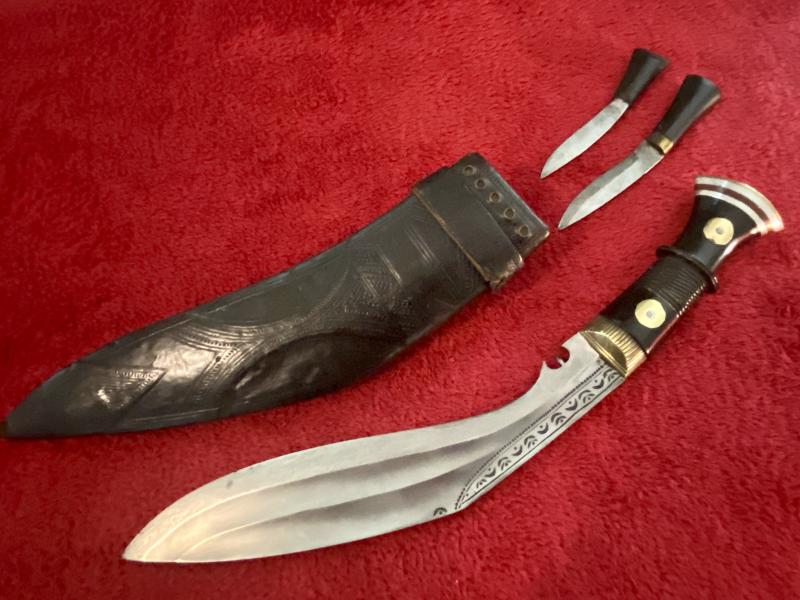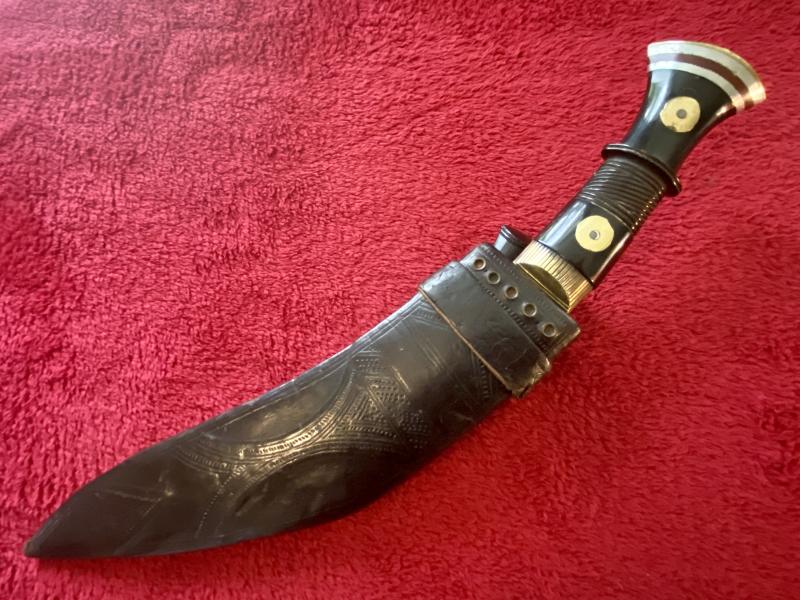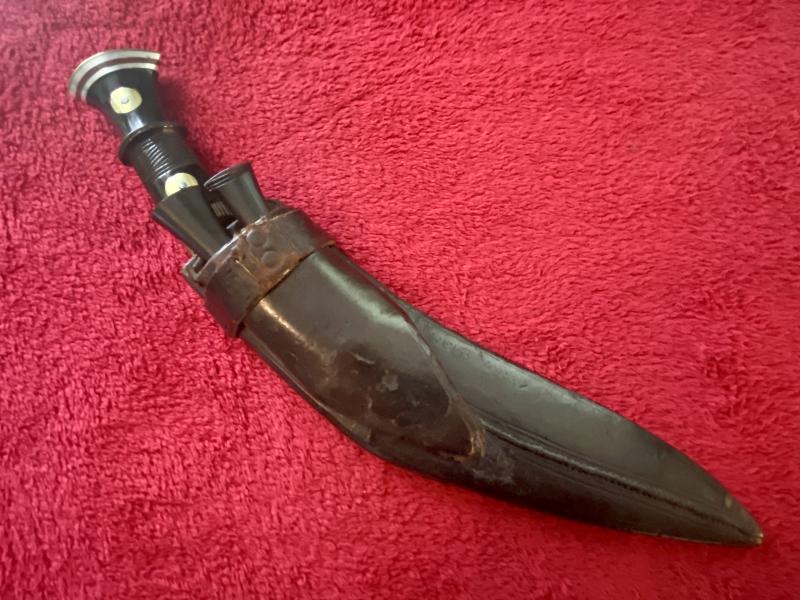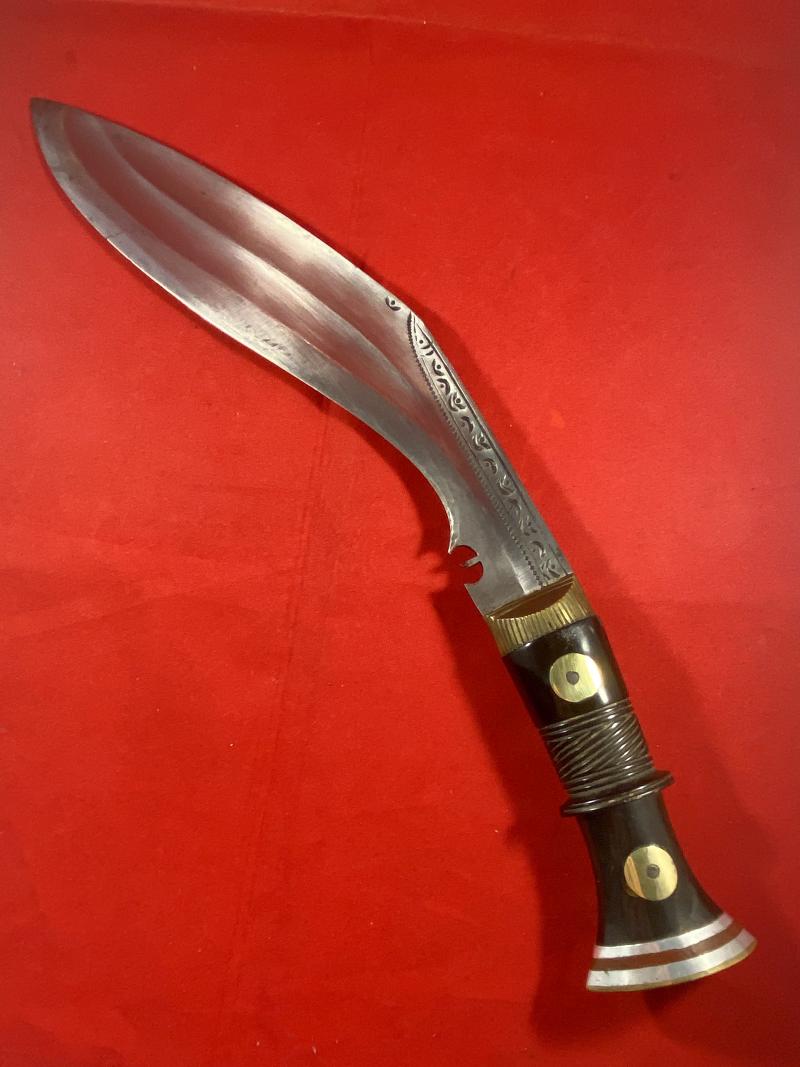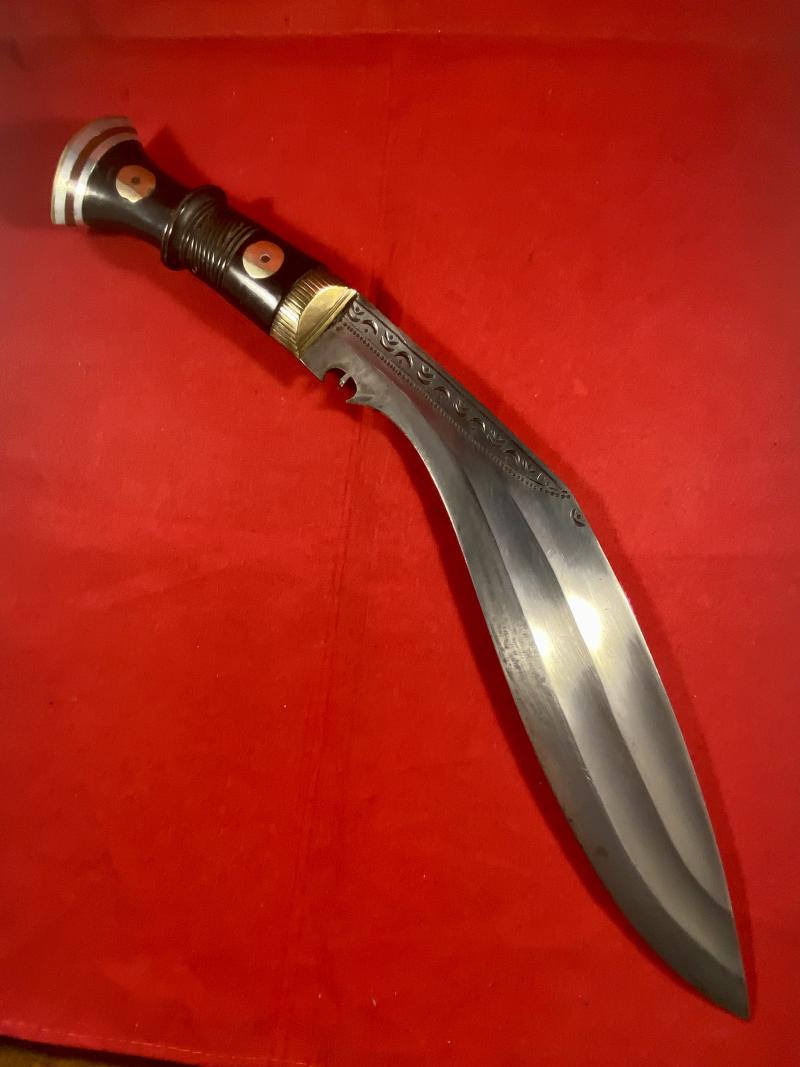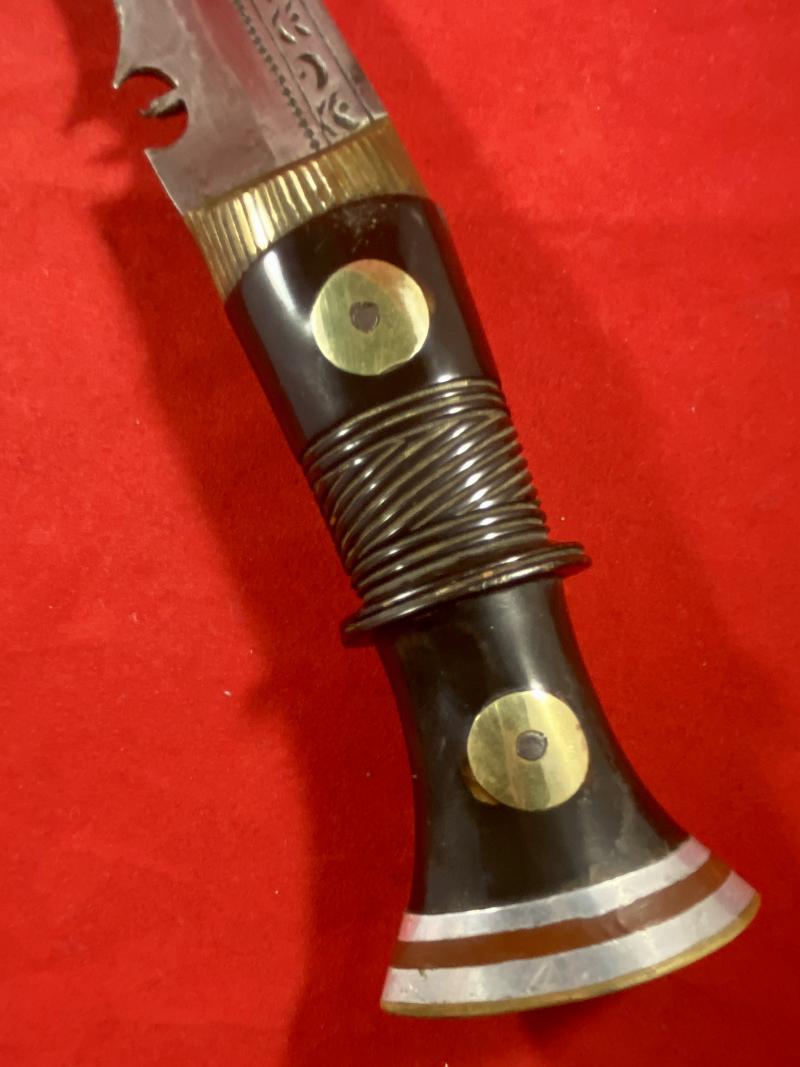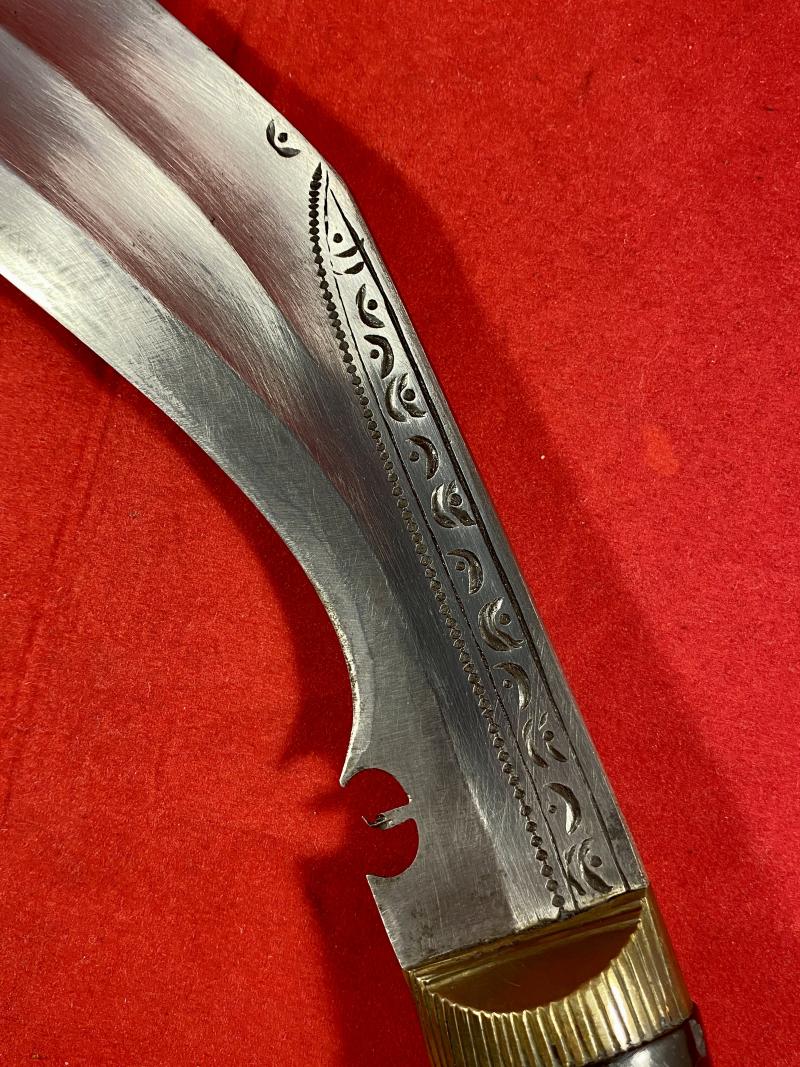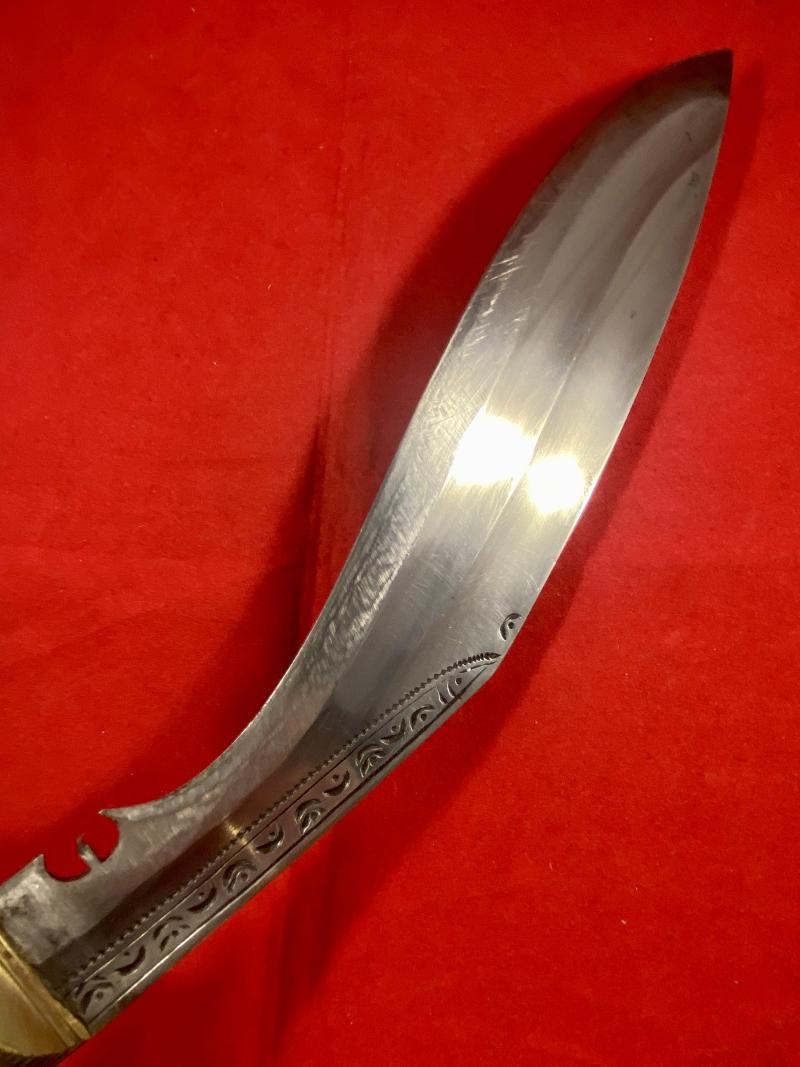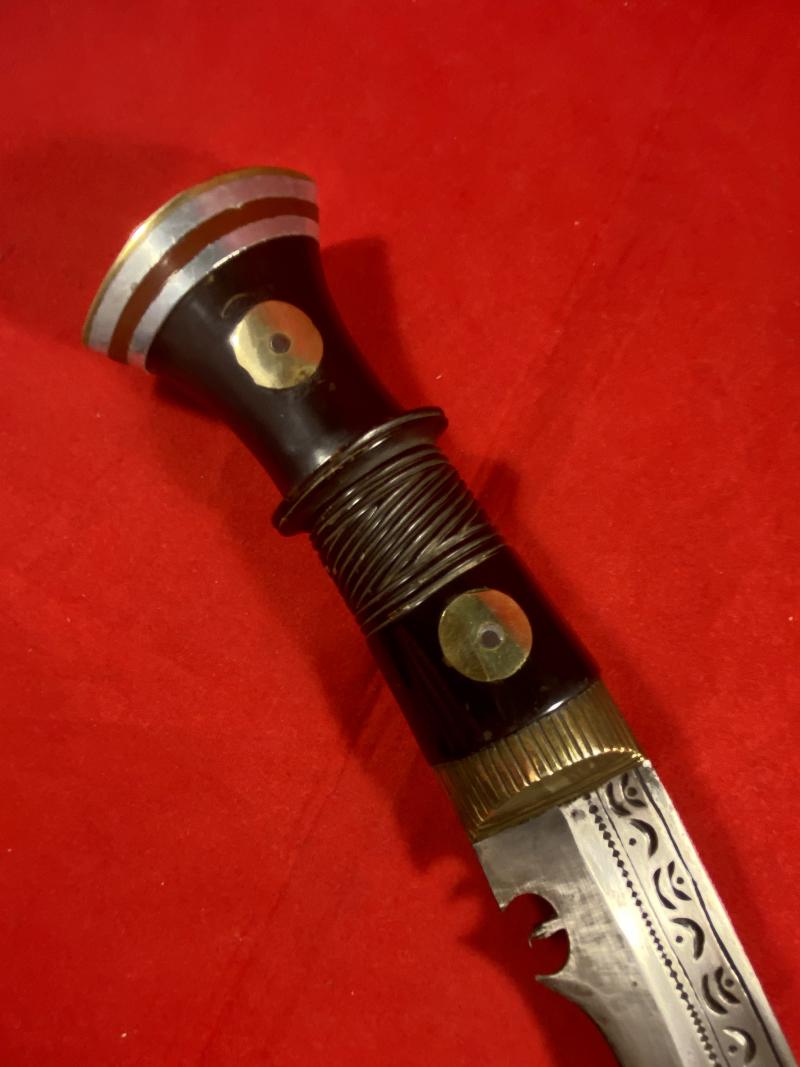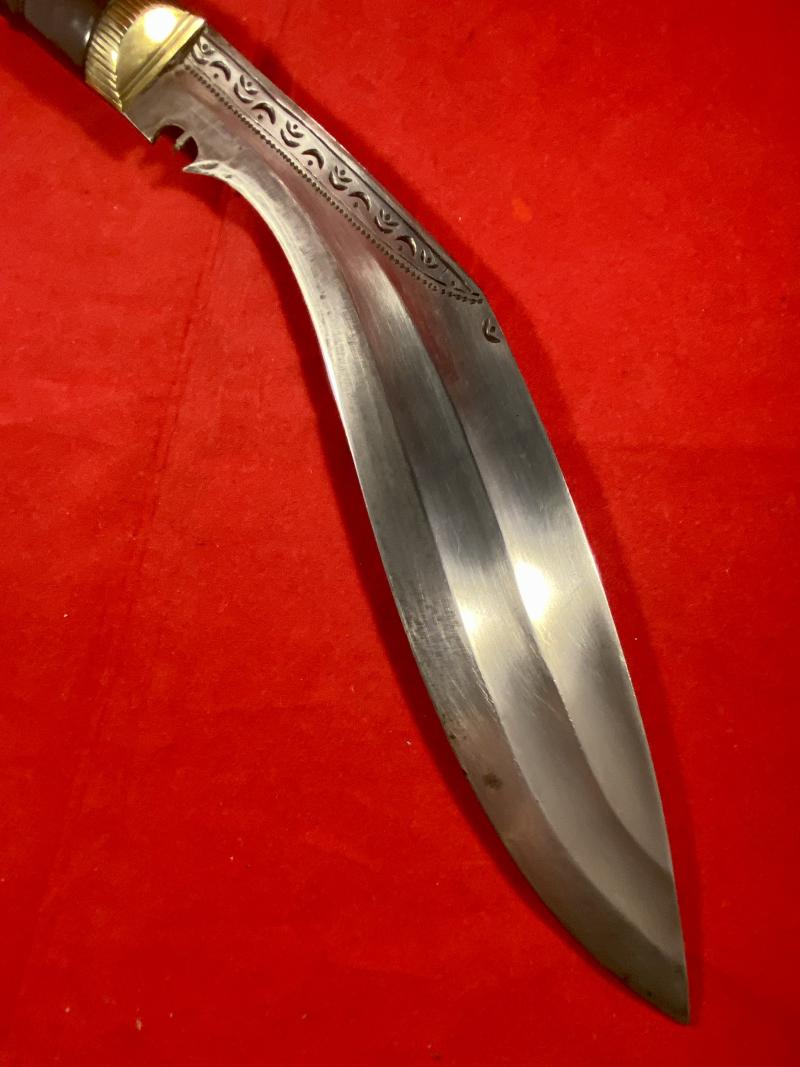Named WW2 RAF/IAF “Bring Back” Burma Kukri Knife with Leather Covered Scabbard
Here on offer is a WW2 period named member of the RAF/IAF “bring back” Kukri knife from Burma with a black leather covered scabbard.
Given the ornate grip and the tooled decoration on the scabbard of this Kukri, it looks to me to be a “souvenir” piece that was made at the time for RAF personnel to bring back home after the war.
On the back of the scabbard the following details of the soldier who brought it back, have been lightly embossed into the black leather:
M. A. MALKIN
No.4 SQUADRON S.E.A.A.F.
S.E.A.A.F. relates to the WW2 South East Asian Air Force.
No. 4 Squadron, Air Force was formed at Peshawar on 01 Feb 1942 under the command of Sqn Ldr HU ‘Bulbul’ Khan.
In March 1944, the Sqn moved to Feni for operations against the Japanese. It was from Feni that the Sqn carried out its first operational sorties by providing fighter escort to Dakota, engaged in supply dropping missions in the northern Burma. By end of June they moved to Cox Bazar to relieve No.6 Squadron. In July 44, they squadron flew 219 sorties comprising of tactical, photographic and offensive sorties over the Arakan front. Notable missions include attacking the Bashas in Mayu valley, strafing of Sampans on the Kaladan river, bombing of Gunpits in Seinnyinbya and offensive recce missions over most of Arakan.
In December 1944, the third Arakan offensive began. The objective being to capture the Maya peninsula Akyab, Ramree island and to contain the Japanese in the Arakan and prevent them from crossing the Arakan Yoma and interfering with the advance of the XIV Army. No 4 Sqn operated in direct support of the land forces and bombed Japanese strongpoint at Haparabyin and Ratheduang.
Feb 45 saw the Squadron based at Akyab. Sorties were flown which involved laying a smoke screen at Kumhataung and bombing Ruywa. These kinds of sorties continued well into March 45 when the Squadron was finally ‘rested’. They were dispatched to move back to India and convert to Spitfires.
The knife itself has the traditional Kukri curved blade but with unusual blood groves? It is in excellent condition and has some ornate chisel work to the blunt top edge of the blade.
The grip has been beautifully carved and polished from a solid piece of dark horn that is held in place by two large flush brass/steel rivets.
The pommel has been made of layers of aluminium and red plastic and has a brass cap with a diamond design to the top.
The ferrell is solid brass with cut groves on the outer edges.
The kukri scabbard has the usual wood structure covered in black leather, which has been beautifully worked with ornate patterns on the front.
On the back are two pockets that hold a pair of small knives. One of these, the chakmak, is for sharpening the kukri and can be used with a flint to create a spark. The other, the karda, is used as a penknife for skinning animals.
There are also the remains of a leather hanging strap around the top that is now missing its long belt strap.
It is in great condition, with just some scuff marks to the leather and slight loss of the thin leather on the back.
The blade measures approximately 10.7” (27cm) long and the knife is 15.75” (40cm) in total length.
With the scabbard, it weighs a heavy 655g.
This knife clearly has a story to tell and the original owner is worth researching.
Please see my pictures for the details of the condition, which complement this description.
Please see my TERMS OF BUSINESS regarding Deliver Charges and Insurance regarding additional insurance cover, should you require it, BEFORE the item is dispatched.
The responsibility lies with the customer to check with your Customs restrictions that this item can be imported into your country.
Code: 51028

